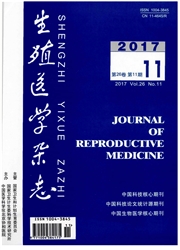

 中文摘要:
中文摘要:
客观 Nonsyndromic 劈开嘴唇与或没有劈开腭(NSCL/P ) 是有不清楚的病原学的一个普通出生缺点。基因、环境的因素可以贡献 NSCL/P。许多基因作为与这疾病联系的候选人基因被识别了。干扰素规章的因素 6 (IRF6 ) 基因和转变生长因素 -- 一(TGFA ) 基因似乎在 NSCL/P 的倾向关键。这里,我们评估了一些单个核苷酸多型性(SNP ) 在与 NSCL/P.Methods 由父亲,母亲和影响后代组成的中国原子家庭的 TGFA 和 IRF6 基因的 loci NSCL/P 的五十个病人被整形外科医生证实。他们和他们的父母在学习被包括,都与知情同意。TGFA 和 IRF6 基因的 SNP loci 被微数组技术分析。一些 PCR 产品随机被选择并且定序检查微数组结果。在耐心的组和父母组之间的基因类型和等位基因频率的分发被比较。然后, Haplotype 相对风险(HRR ) 和传播不平衡测试(TDT ) 被执行。结果随机选择的 PCR 产品的序列都与微数组结果一致。所有 loci 在 Hardy-Weinberg 平衡。在在病人和他们的父母之间的遗传型和等位基因的分发没有重要差别。用 HRR 和 TDT 分析, IRF6 的 V274I 与 NSCL/P 被联系,当 IRF6 的另一个 SNP 地点不是时。连接不平衡的充分证据与 HRR 分析,然而并非与 TDT 分析在 TGFA 和疾病的 2 SNP loci 之间被发现。我们的学习在亚洲祖先的人口在 NSCL/P 的病原学证实 IRF6 的贡献的结论。有 NSCL/P 的 TGFA 的协会要求进一步的研究。
 英文摘要:
英文摘要:
Objective: Nonsyndromic cleft lip with or without cleft palate(NSCL/P) is a common birth defect with unclear etiology. Both genetic and environmental factors may contribute to NSCL/P. Many genes have been identified as candidate genes associated with this disease. Interferon regulatory factor 6(IRF6) gene and transforming growth factor-a(TGFA) gene seem to be crucial in the predisposition of NSCL/ P. Here we evaluated some single nucleotide polymorphisms(SNPs) loci of TGFA and IRF6 genes in Chinese nuclear families consisting of fathers, mothers and affected offspring with NSCL/P. Methods:Fifty patients of NSCL/P were confirmed by the plastic surgeons. They and their parents were included in the study, all with the informed consents. SNPs loci of TGFA and IRF6 genes were analyzed by microarray technology. Some PCR products were randomly chosen and sequenced to check microarray results. The distribution of gene type and allele frequency between patient group and parents group were compared. Then a Haplotype Relative Risk(HRR) and Transmission Disequilibrium Test(TDT) were performed. Results:The sequences of randomly selected PCR products were all consistent with the microarray results. All loci were in Hardy-Weinberg equilibrium. There were no significant differences in the distribution of genotypes and alleles between patients and their parents. Using HRR and TDT analyses the V274I of IRF6 was associated with NSCL/P, while another SNP locus oflRF6 was not. Strong evidence of linkage disequilibrium was found between the 2 SNP loci of TGFA and disease with the HRR analysis, but not with the TDT analysis. Conclusion:Our study confirms the contribution of IRF6 in the etiology of NSCL/P in populations of Asian ancestry. The association of TGFA with NSCL/P requires further research.
 同期刊论文项目
同期刊论文项目
 同项目期刊论文
同项目期刊论文
 期刊信息
期刊信息
